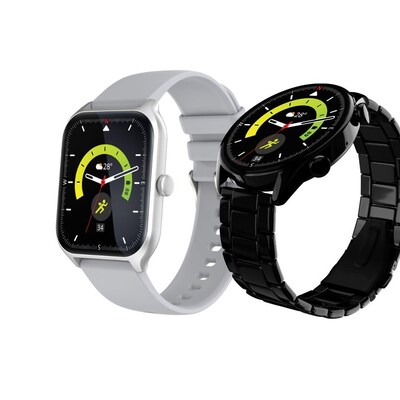
Were you unable to attend Transform 2022? Check out all of the summit sessions in our on-demand library now! Watch here.
Marketers are approaching a crossroads with their most important digital asset: data. As the stream of data multiplies exponentially each year, one of the digital marketing industry’s most widely used tools to analyze campaigns and build lookalike audience profiles — cookies — is dying a slow death. As the saying goes, “As one chapter ends, another begins.”
To understand how customer data platforms can leverage data to improve CX in a cookieless future, it’s important to understand the types of audience data that marketers can work with. There are three types of audience data:
| First-party | Third-party | Zero-party | ||
| Data collected through direct consumer engagement with a brand.
For example, a consumer visits a retail site to look at shoes; retailer collects the data. |
Data collected by an entity that has no direct relationship with the consumer.
For example, a consumer visits a retail site to look at shoes; analytics company collects the data. |
Data knowingly shared by a consumer with a brand as part of a value exchange.
For example, a consumer visits a rewards program site and shares information to earn rewards. |
Customer data platforms (CDPs) are built to unify data for both customers and prospective customers. In this vein, CDPs manage a variety of consumer data. While the loss of third-party cookies will challenge marketers and agencies, first-party cookies are also at risk in a digital world that is increasingly mobile, app and privacy-driven. As a result, “cookie-free” solutions will deliver the next generation of consumer experiences. The combination of CDPs and zero-party data makes a compelling 1-2 punch for improving customer experience (CX) and innovating brand engagement as the consumer-led internet takes shape, a.k.a. Web3.
| Zero-party data | First-party data |
| Email, interests, occupation and other registration information | Behavior that enriches existing profiles and enables lookalike modeling; conquesting |
Zero-party data: Shared data is compliant data
Fortunately, the future is here, and it’s called zero-party data. If you are confused about or tired of data taxonomies, zero-party data is very straightforward: It is data a consumer shares “directly and proactively with a brand,” per Forrester Research taxonomy. The intentional sharing of information addresses consumer data protection legislation (for example, GDPR, CCPA, DCA) while establishing trust between a consumer and brand.
Event
MetaBeat 2022
MetaBeat will bring together thought leaders to give guidance on how metaverse technology will transform the way all industries communicate and do business on October 4 in San Francisco, CA.
Register Here
Why would a consumer decide to share information such as their name, email and behavioral data with a brand? The answer is simple: because the consumer sees value. An equitable value exchange between consumers and brands is long overdue and is a core tenet of Web3.
Zero-party is the data hero for marketers
Marketers love first-party data because it is “owned” by the brand. Unfortunately, first-party data tends to be limited in scale, whereas third-party data provides significant audience extension. Still, for anyone who has worked with third-party audience data, it is a mixed bag at best. Between data brokers and data privacy concerns, marketers are already navigating a complex, if not opaque, audience data ecosystem. Meanwhile, if attributes such as age and gender are frequently incorrect on a given third-party profile, wouldn’t marketers be better served allocating funds elsewhere?
Zero-party data is well-lit, trustworthy and compliant — a true hero for the data-driven marketer. A key value proposition of zero-party data is that it represents people-based data, as opposed to cookies, which represent audience-based data.
Data orchestration can make or break customer experience (CX)
If you’ve been the recipient of poorly timed or simply misplaced marketing from brands that should know you based on prior engagement — you’re not alone. Global enterprises typically maintain a tech stack spanning sales, marketing and customer relationship management (CRM). To further complicate matters, agency partners that manage advertising campaigns may be working with yet another set of tools. As a result, a consumer profile may exist on one or more platforms. Understanding the stage of a consumer journey is critical to delivering relevant information via paid or owned media, but data silos can create disjointed marketing messages that can damage relationships between brands and consumers. On the other hand, proper data orchestration paves the way for intelligent brand messaging and a positive CX.
CDPs enhance and extend marketing campaigns
In a world with only first-party data, marketers are limited to consumers that have a direct relationship with their respective brands. This relationship could be in the form of a first-party cookie, or ideally, a persistent identifier such as an email address. While upselling and/or cross-selling are effective, neither is a viable long-term strategy for growth.
A CDP plugged into zero-party data opens the door to a variety of marketing initiatives, including customer acquisition, conquesting and lookalike modeling.
How does an opt-in, shared data set work?
In the hypothetical example below, Acme Footwear is looking to expand audience reach beyond its current first-party data. By leveraging a zero-party data set that is integrated with a CDP, Acme Footwear can build custom campaigns to engage with its target demographic and psychographic.
Customer profile (target audience):
- Gender: Male
- Age: 25-30
- Children: no
- Gym membership: yes
- Favorite pastime: sports
Zero-party data available:
- Retail brand: multi-sport athlete
- Beverage company: sports drink
- Car rental company: age 25-30
- Fitness club: member
- Shaving brand: male
- Theme park: no children
Just as Acme Footwear can utilize various zero-party data to inform campaigns, each participant is also able to cross-leverage data. By sharing data points from their respective data sets, all of these brands can use and benefit from permission-based zero-party data to further their marketing objectives. Think of the CDP/zero-party data integration as a Web3 data cooperative providing a transparent and compliant means for enabling campaign targeting and personalization in the new internet.
Similar to Web2, the cookieless era of Web3 will still be fueled by consumer data. CDPs and zero-party data will ensure proper consent from consumers while enabling more intelligent campaign targeting for brands. Business transparency and aligned incentives are the paths toward improving CX.
Michelle Wimmer is Head of Ad Operations at Permission.io


/cdn.vox-cdn.com/uploads/chorus_asset/file/25355897/STK022_ELON_MUSK_CVIRGINIA_D.jpg)



